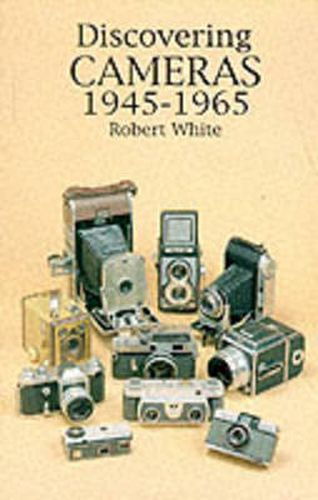Readings Newsletter
Become a Readings Member to make your shopping experience even easier.
Sign in or sign up for free!
You’re not far away from qualifying for FREE standard shipping within Australia
You’ve qualified for FREE standard shipping within Australia
The cart is loading…






This book traces the changes in the years from 1945 to 1965 wen there were considerable advances in photography and cameras. At the start of the period, most snapshot photographs were black and white contact prints made from box and folding bellows camera negatives: by the end, snapshooters enjoyed the simplicity of instant loading cameras, automatic exposure control, built-in flash and colour prints. The interchangeable lens 35 mm camera with coupled rangefinder enjoyed a boom, but had to finally give way to the single-lens reflex; 6 cm square twin-lens reflex and folding roll-film cameras grew steadily in popularity until they were pushed aside by cameras taking smaller negatives.
Tiny cameras using 16 mm film and half-frame 35 mm cameras were popular for a while, whilst the Polaroid instant picture system, launched shortly after the Second World War, went from strength to strength. The post-war period of shortages gave the chance to camera makers in Britain, American, Italy, France and elsewhere to challenge the strong German industry, but only until the German industry fully recovered. By then, German camera makers faced competition from Japan by 1965, names such as Nikon, Pentax and Canon, unknown in 1945, had become world-famous
$9.00 standard shipping within Australia
FREE standard shipping within Australia for orders over $100.00
Express & International shipping calculated at checkout
This book traces the changes in the years from 1945 to 1965 wen there were considerable advances in photography and cameras. At the start of the period, most snapshot photographs were black and white contact prints made from box and folding bellows camera negatives: by the end, snapshooters enjoyed the simplicity of instant loading cameras, automatic exposure control, built-in flash and colour prints. The interchangeable lens 35 mm camera with coupled rangefinder enjoyed a boom, but had to finally give way to the single-lens reflex; 6 cm square twin-lens reflex and folding roll-film cameras grew steadily in popularity until they were pushed aside by cameras taking smaller negatives.
Tiny cameras using 16 mm film and half-frame 35 mm cameras were popular for a while, whilst the Polaroid instant picture system, launched shortly after the Second World War, went from strength to strength. The post-war period of shortages gave the chance to camera makers in Britain, American, Italy, France and elsewhere to challenge the strong German industry, but only until the German industry fully recovered. By then, German camera makers faced competition from Japan by 1965, names such as Nikon, Pentax and Canon, unknown in 1945, had become world-famous